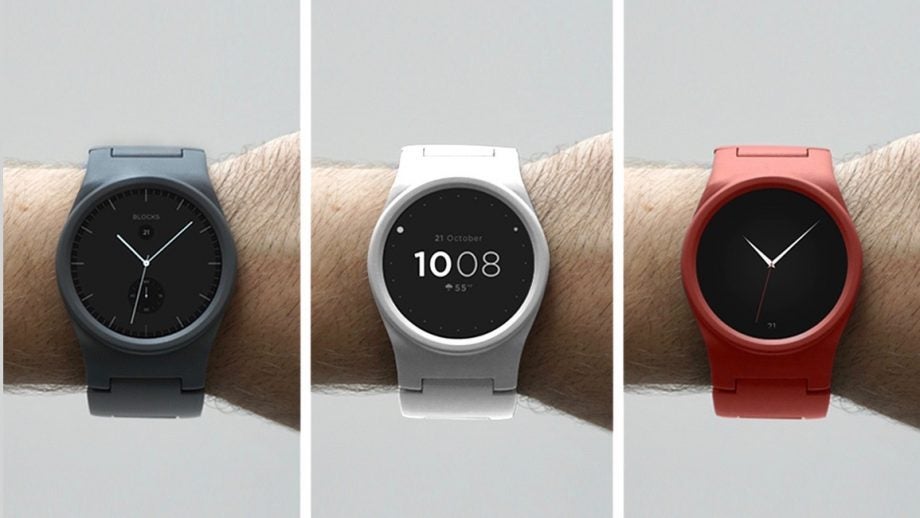Blocks officially falls apart − but getting a Kickstarter refund for the modular smartwatch won’t be easy

For every Kickstarter success story, there seem to be a multitude of projects that raised the cash but didn’t quite get off the ground. Remember Blocks? The modular smartwatch was a Kickstarter sensation in 2015. Unfortunately, it has collapsed spectacularly. Four years on, Blocks Wearables Ltd has started contacting Blocks’ backers, informing them that the company is now being liquidated.
While this news isn’t hugely surprising, it doesn’t make it any easier for the 5063 backers who raised a total of $1,613,874 for the gadget. 250 people pledged $530 or more. The funding goal was $250,000.
In the following sections, we’ll explain where you stand if you’ve contributed to a Kickstarter project, but want your money back.
How to get a Kickstarter refund
What to do if a project doesn’t hit its funding goal
This one’s straightforward. You won’t be charged if a project you’ve contributed to fails to reach its fundraising goal.
As stated in Kickstarter’s Terms of Use: “If the campaign hasn’t reached its fundraising goal, you won’t be charged, no funds will be collected, and no money will change hands.”
How to cancel a Kickstarter pledge before the funding deadline
You can easily cancel or change your pledge at any time before the project’s funding deadline, but things get a little more complex if you try to make the change during the final 24 hours of the campaign.
To cancel or change a pledge, take the following steps:
- Visit the project page
- Click the ‘Manage your pledge’ button
- Select either ‘Cancel Pledge’ or ‘Change your pledge’
If your cancellation or change results in the project dropping below its funding goal in its final 24 hours, you’ll also have to contact Kickstarter customer support.
How to cancel a Kickstarter pledge after the funding deadline
It is possible to get a refund after a project’s funding deadline has passed, but in order to do so you’ll have to get in touch with the project’s creator. However, the creator is under no obligation to grant your request.
As stated in Kickstarter’s Terms of Use: “Once the project has been funded, you can only cancel or change your pledge by making special arrangements directly with the creator.”
What to do if a project you contributed to collapses
Here’s where things get tricky. What’s happening with Blocks is not unique. There’s a long list of Kickstarter projects that have hit their funding goal but failed to get off the ground, leaving backers both disappointed and out of pocket.
Unfortunately, the process of getting a refund isn’t as simple as clicking a few buttons on the Kickstarter website. In fact, Kickstarter itself does not offer refunds.
Instead, you have to contact the project’s creator directly – and even then, a refund is far from guaranteed.
As stated in Kickstarter’s Terms of Use: “When a creator posts a project on Kickstarter, they’re inviting other people to form a contract with them. Anyone who backs a project is accepting the creator’s offer, and forming that contract.
“Kickstarter is not a part of this contract – the contract is a direct legal agreement between creators and their backers.”
It adds: “Backers must understand that when they back a project, they’re helping to create something new — not ordering something that already exists. There may be changes or delays, and there’s a chance something could happen that prevents the creator from being able to finish the project as promised.”
None of that is especially comforting.
Kickstarter says that a creator that fails to deliver after hitting its crowdfunding goal “must make every reasonable effort to find another way of bringing the project to the best possible conclusion for backers”, by doing the following:
- Explaining what work has been done, how funds were used, and what prevented them from finishing the project as planned
- Working “diligently and in good faith” to bring the project to “the best possible conclusion” in a timeframe that’s communicated to backers
- Demonstrating that they’ve used funds “appropriately and made every reasonable effort” to complete the project
- Being honest, and making no material misrepresentations in their communication to backers
- Offering to return any remaining funds to backers who have not received their reward (in proportion to the amounts pledged), or explaining how funds will be used to complete the project in some alternate form
Blocks Wearables Ltd has started asking Blocks backers to fill in and return a ‘Proof of Debt’ form (Liliputing via Android Police).
Unfortunately, the company has previously claimed that all of the money that was raised through its 2015 Kickstarter campaign “was spent directly on paying our first manufacturer to setup production ($1.1Million) and to our OS provider for the license ($100,000)”.
That does not bode well. However, as this is an ongoing situation, right now we’ll have to cross our fingers and hope that Blocks Wearables Ltd refunds all 5063 of the people who contributed money to it.
If the company fails to do so, your only option is to take legal action. At the moment though, there’s still some hope that this won’t be necessary.
Regardless, it’s a grim situation, and it reiterates that contributing to any Kickstarter campaign is always a risk. Unfortunately, the only thing you can do before making a pledge is research the creator behind the project as thoroughly as you possibly can.
You can get in touch with a project’s creator before making a pledge by taking either of the following steps:
- Hitting the ‘FAQ’ tab on the project page and clicking ‘Ask a question’
- Clicking the creator’s profile name on the project page and hitting ‘Contact me’ on their bio page


